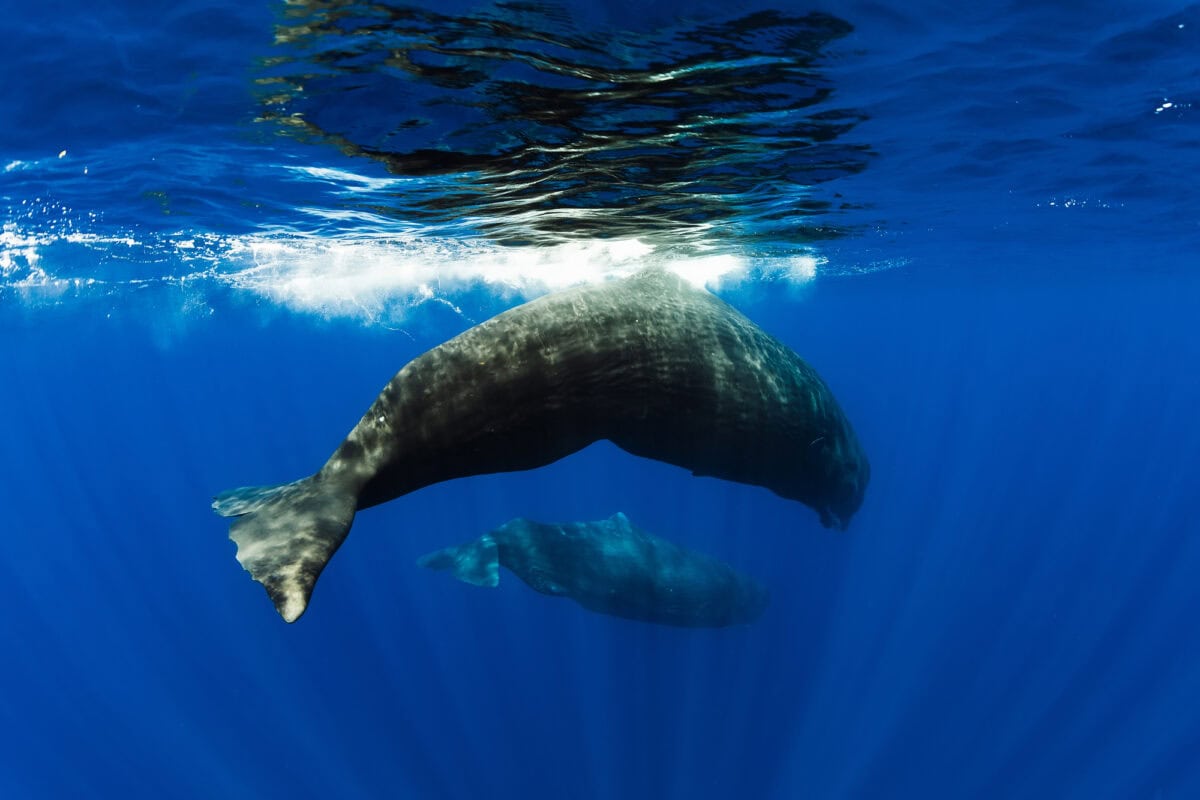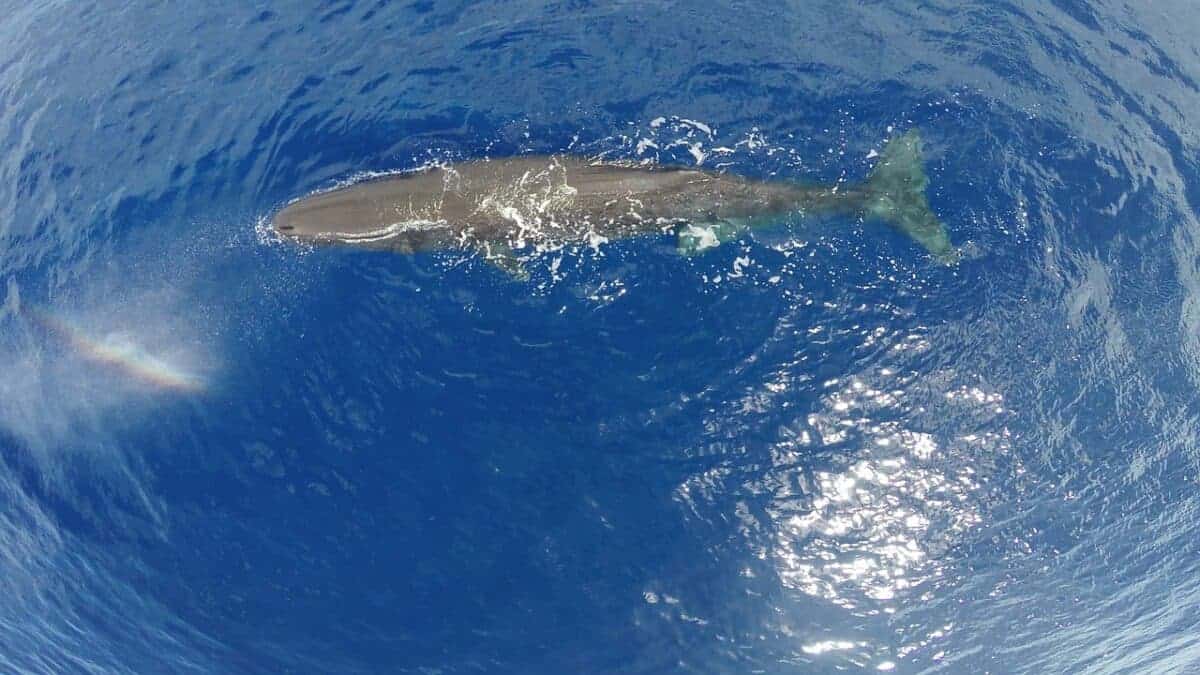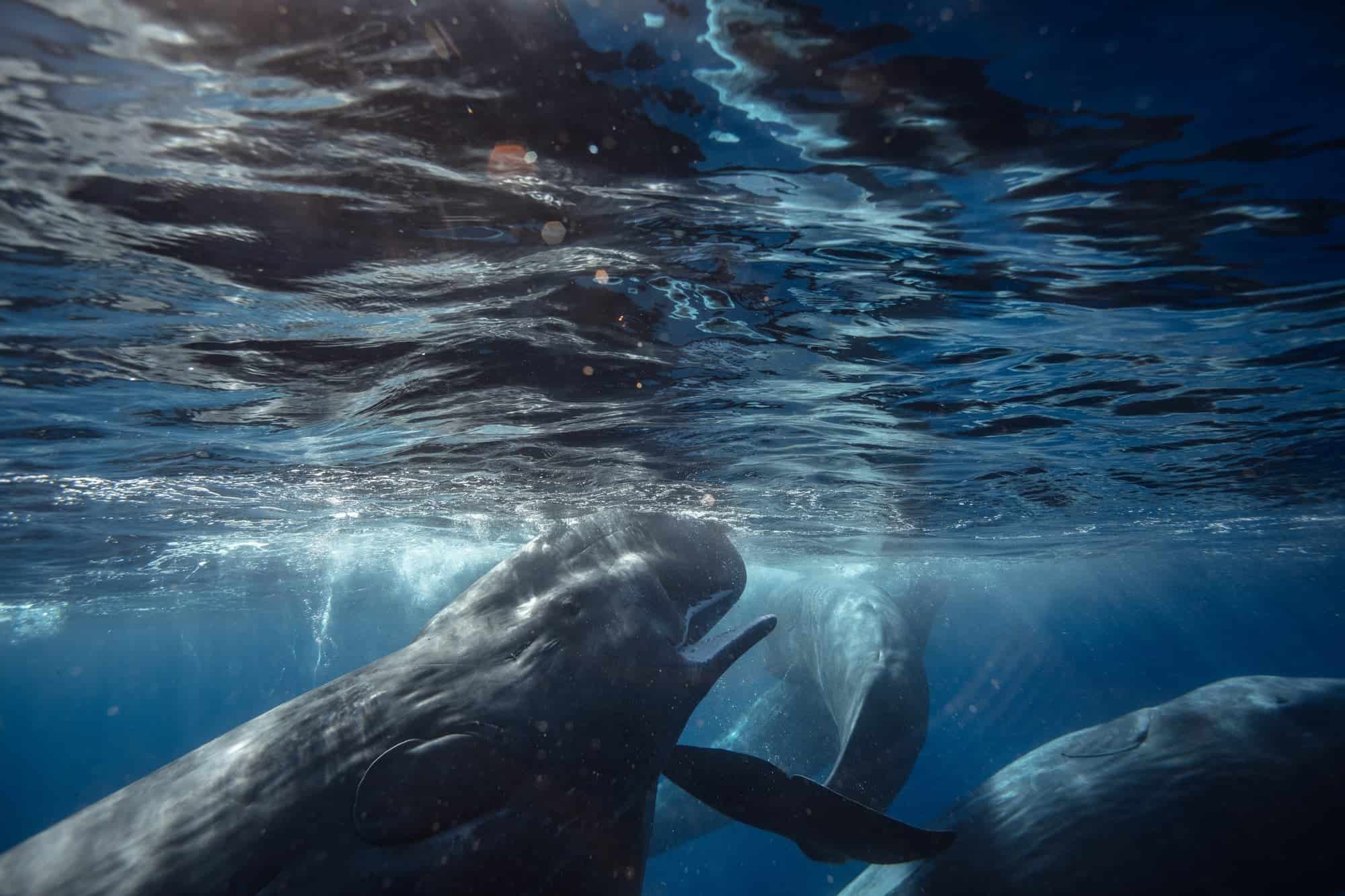The sperm whale, scientifically known as Physeter macrocephalus, is not only the largest of the toothed whales but also holds the remarkable distinction of being the loudest animal on Earth. These magnificent creatures have long fascinated both scientists and enthusiasts alike, thanks to their impressive vocalizations, which play a crucial role in their daily lives. In this article, we will delve into the world of the sperm whale, exploring the nature of its sounds and the purpose they serve.
Anatomy of Sound Understanding Sperm Whale Clicks

At the heart of the sperm whale’s vocal prowess are its powerful clicks. These sounds can reach up to 230 decibels, making them louder than a jet engine. The clicks are produced in a specialized organ known as the “monkey lips,” located within the whale’s head. The sound waves generated by these lips are then focused by the spermaceti organ, a large, oil-filled sac that dominates the whale’s massive head. This ingenious biological system acts like a bio-sonar, allowing the whale to emit sound pulses that travel through the ocean.
The Purpose Behind the Sound

Sperm whales utilize their mighty clicks primarily for echolocation, a technique vital for hunting and navigation in the deep, dark waters of the oceans. By emitting clicks and then listening to the echoes that bounce off objects, sperm whales can determine the size, shape, distance, and even the composition of prey or obstacles around them. This ability is crucial for locating their favourite meal—squid—in pitch-black depths where light cannot penetrate.
Beyond hunting, these clicks also serve as a means of communication. Sperm whales are highly social animals, often found in groups known as pods. Complex patterns called codas are used to communicate information between individuals, helping them maintain social bonds, coordinate movements, or warn against potential threats.
Why Are Sperm Whales So Loud?

The extraordinary loudness of sperm whale clicks is largely a function of their deep-sea habitat. Sound travels farther in water than in air, but deep-sea conditions—such as varying temperatures and pressures—can distort or hinder sound propagation. By producing exceptionally loud clicks, sperm whales ensure their echolocation and communication signals can pierce through these challenges, covering long distances to effectively reach their destination. This adaptability gives them an edge in effectively navigating and thriving in their environment.
Human Interest and Research

Scientists are continually discovering new insights into the behaviours and communication methods of sperm whales. Research often involves using underwater microphones, called hydrophones, to record and analyze their clicks and codas. These studies have revealed that different groups of sperm whales may have distinct dialects, suggesting a level of cultural complexity previously unrecognized in non-human species.
Moreover, understanding sperm whale communication and social structures contributes significantly to conservation efforts. As acoustic pollution from ships and human activities increases in the oceans, scientists warn that these noises can interfere with sperm whales’ ability to hunt and communicate. By raising awareness of their remarkable vocal abilities, conservationists hope to garner greater protection measures for these gentle giants of the seas.
Conclusion: The Legacy of the Loudest

The sperm whale’s title as the loudest animal on Earth is a testament to its unique adaptations and survival strategies. These majestic creatures have mastered the art of sound, using it to communicate and thrive in the ocean’s depths. As we continue to learn from and about sperm whales, it enables us to better appreciate the rich and complex lives of these fascinating animals, fostering a deeper connection and commitment to protecting our planet’s incredible biodiversity.
- 14 Creatures That Can Freeze and Thaw Back to Life - August 9, 2025
- 10 Animals That Risked Their Lives to Save Humans - August 9, 2025
- 14 Reasons Why Bears Are Afraid of Humans (Most of the Time) - August 9, 2025

